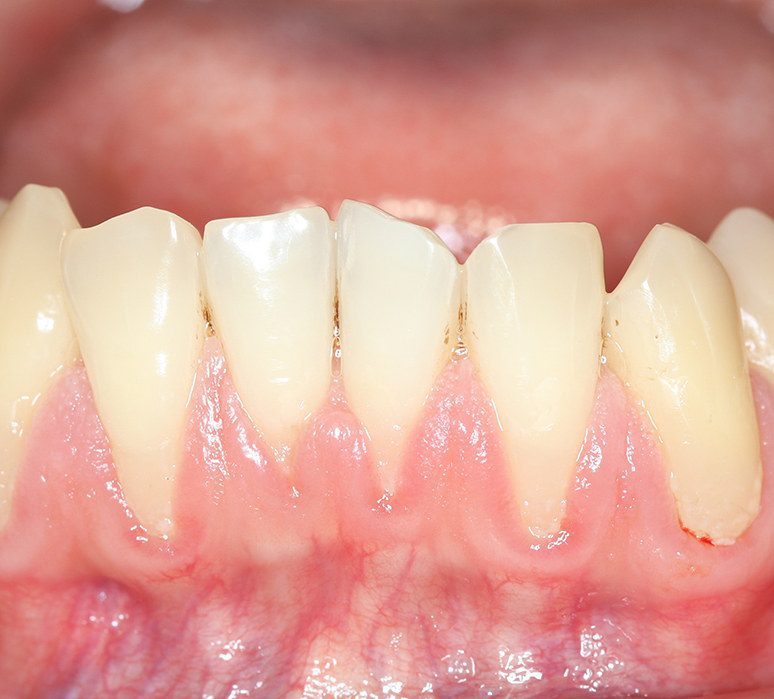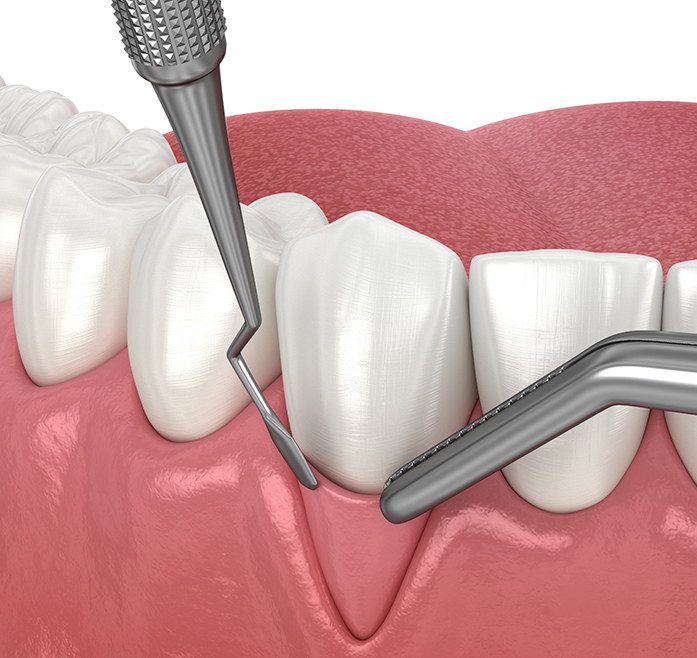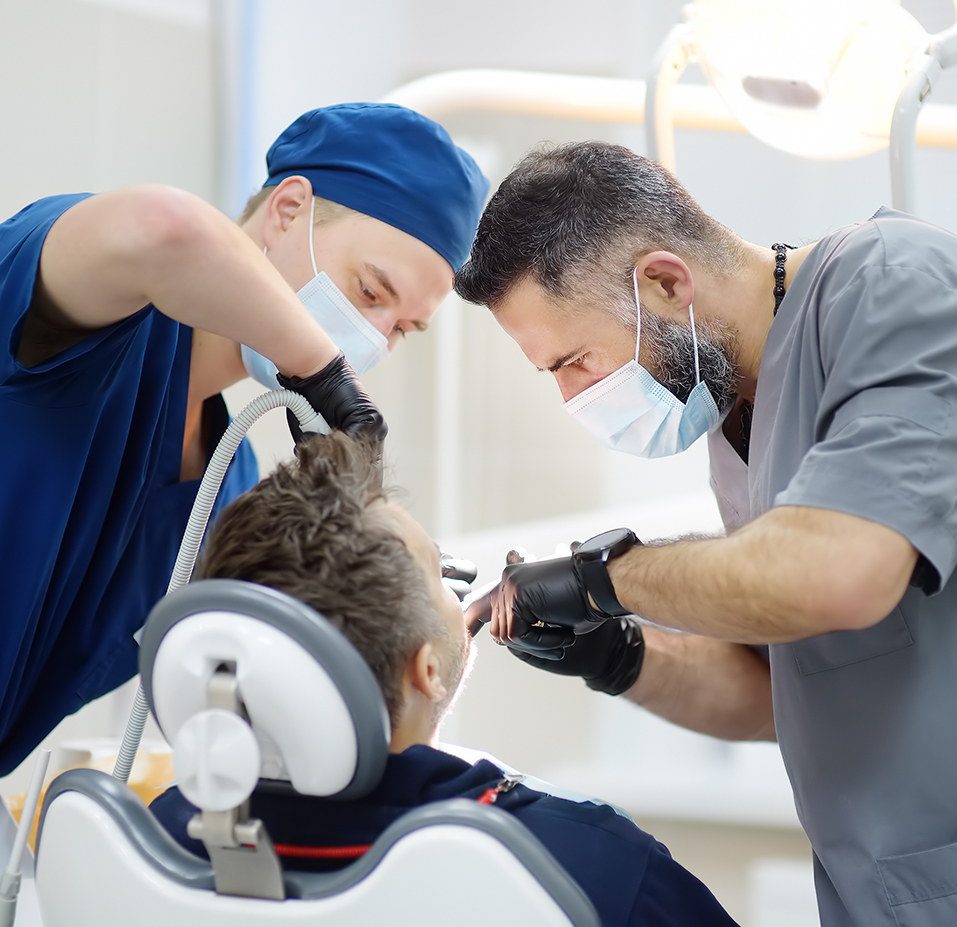Gum Grafting
Have you noticed that the gums on one or more of your teeth are getting thinner and thinner, and you're worried about losing your teeth? It's normal to have fears when you don't know exactly what to expect. Fortunately, there's a solution: gum grafting. At the Wayne Dionne Dental Clinic in Edmundston, we offer a variety of grafting options to suit your needs.
Why have a gum graft?
What is gingival recession?
Gum recession is one of the most obvious signs of gum disease. Although it can be limited to a single tooth, it can also attack several, causing teeth to loosen. Gum disease can be seen in teeth of varying length, tissue inflammation and gingival bleeding, particularly during oral hygiene routines.


Causes of gingival recession
Gum recession doesn't happen overnight. There are many possible causes, some of which are beyond our control, such as genetics, physiognomy and natural predispositions to gum disease. Other main causes include
- Gum disease, such as gingivitis and, above all, periodontitis.
- Bad habits, such as smoking, over- or under-brushing and nail biting.
- Aging
- Heredity
- Dental malocclusion
- A poorly fitted prosthesis
Consequences of gingival recession
Because gum tissue is the first barrier to many bacteria, your teeth become very vulnerable when they become loose. Without sufficient gum tissue around your tooth, bacteria can easily infiltrate and cause gum disease or root caries. By the same token, gum recession also leads to tooth sensitivity to cold, heat and acidity.
Gingival grafting counteracts the undesirable effects of gum recession and tooth loosening, such as bone and gum deterioration and, in rarer cases, tooth loss.

Gum grafting in more detail
Types of grafts
As each situation is unique, your dentist will take the time to explain the different types of grafts that can be offered.
Connective tissue grafting
This is the most common form of grafting. The dentist cuts a piece of skin from the roof of the mouth, removes connective tissue from underneath and sutures the removed tissue to the gum tissue surrounding the exposed root. Over time, the tissue will grow with the original gum tissue, and together they will form a healthier gum around the tooth. It helps counteract the progression of gingival recession, but not its aesthetic effects.
Free gingival grafting
This involves removing a small amount of keratinized tissue directly from the palate, and suturing it to the affected gingiva. This type of graft is mainly used to cover the roots of exposed teeth or to thicken thin gingiva.
Allogeneic or xenogeneic tissue grafting
This involves a graft of human or animal stem cells, processed in the laboratory. It is recommended in cases where the patient only needs to cover exposed roots.

Gingival grafting procedure
Performed in a dental clinic under local anaesthetic, gingival grafting involves five main steps:
- Local anaesthesia of areas affected by surgery
- Gum cleaning
- Gum preparation
- Graft harvesting
- Graft placement and suture fixation
Follow-up visits are then necessary to ensure that the entire procedure has gone smoothly.
Whatever the cause of gum disease, we can't stress this enough: oral hygiene is the cornerstone of your dental and gum health. Adopting good hygiene habits, such as regular brushing and frequent visits to the dentist, can prevent many problems and save you a lot of trouble in the long term.
If you have questions about one of your teeth or gums, don't wait for the situation to get worse. Come visit us at our Edmundston dental clinic. Our dentists and qualified team are here to help you and guide you toward the best treatment for your situation.

Would you like more information about our clinic or any of our services?
Contact us today
A member of our passionate team looks forward to meeting you and answering all your questions!
